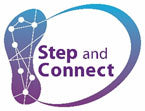
This theory highlights the importance of context. In other words, how you control coordinated movement to achieve a goal or task will vary depending on the person, the task and environment. For example: put me in a large walk-in closet and when I’m reaching, I can stagger my stance and shift my weight to reach. Now, change my environment and put me in a small closet, and this tight space changes my base of support and my strategy. Similarly, if the task changes, it may increase or decrease the difficulty of its balance component. For example, if a person needs to reach high, they may need to stand on their tiptoes, challenging their balance rather than reaching for it lower or at eye level.
I discussed this approach in my class today after listening to my clients in their home or in a class setting discuss their goals for how and where they wanted their balance to improve. One client with PSP told me he wanted to develop his sit to stand when he gets up from his desk chair. The small space changed his strategy of his transfer and his balance in standing. I was lucky to observe this in his actual environment; if I tested his sit to stand in an open wide environment, his balance control was good. In a closed, tight space, it changed his movement patterns and strategy and he would lose his balance backwards because he didn’t shift his weight forward. A simple change of position of the chair and external focus of attention, bringing his hips forward toward the table at the end of the transfer, improved his stability tremendously.
Next, I taught him one side step and then a 90-degree turn to leave his desk. That sequence was his first exercise in his home program: rise up and at the end of transfer, focus on his belt buckle forward towards the table, next take one step to the side, keeping hips forward (or cue belt buckle towards table) and then eyes initiate the turn in the direction he is turning, followed by head turn, trunk and step to the right to complete the 90-degree turn. Repeat 10-20x.
This was also a concern of a client in my class. He said, “I can get out of a chair fine, but when I need to turn and walk from that chair, I feel unsteady.” We practiced as a group getting up from the chair, sidestepping, turning in each direction and also in tight spots. One client even grabbed two weights and dual-tasked, holding weights while transferring and stepping. This was a good reminder that the task, environment and individual are all important in order to achieve a goal, especially when assessing and treating.
We also discussed how the “eyes are the window of the souls”. Imai et al. observed that when participants were asked to move in a straight line and turn 90 degrees, a saccade was made in the direction of the turn. A similar observation was made by Hollands et al. in which healthy participants made saccades in order to position their gaze in line with the endpoint of the required travel path. Clients were asked to pay attention to initiate movements with a saccade, then head, trunk and foot. Some clients were shocked at how much easier it was.
The next time a client tells you they have trouble getting out of a chair, or if you are a client telling your healthcare professional you are having trouble, please elaborate …
Is it from all chairs (high, low, toilets)?
It is only in tight spaces?
Is it perhaps in the dark at night while trying to go to the bathroom?
Does it occur maybe only when you are rushing and moving faster than your comfort level?
Is it when you are carrying something?
These are only a few examples, but remember, the importance of content - meaning how you control coordinated movement to achieve a goal or task - will vary depending on the person, the task and environment.
References
Hollands MA, Patla AE, Vickers JN. “Look where you’re going!”: gaze behavior associated with maintaining and changing the direction of locomotion. Exp Brain Res 2002;143:221-230.
Imai T, Moore ST, Raphan T, Cohen B. Interaction of the body, head, and eyes during walking and turning. Exp Brain Res 2001;136:1-18.
Srivastava, Anshul & F Ahmad, Omar & Pham Pacia, Christopher & Hallett, Mark & Lungu, Codrin. (2018). Relationship between saccades and locomotion. 10.14802/jmd.18018.
Woollacott MH, Shumway-Cook A. Concepts and Methods for Assessing Postural Instability. Journal of Aging and Physical Activity, 1996,4,214-233 O 1996 Human Kinetics Publishers, Inc
Be the first to comment